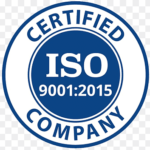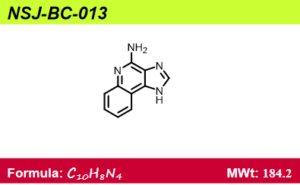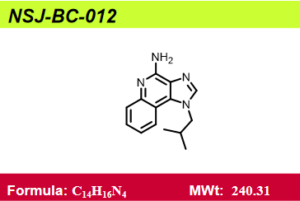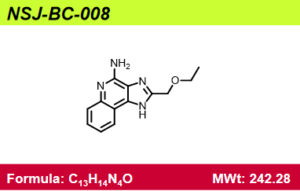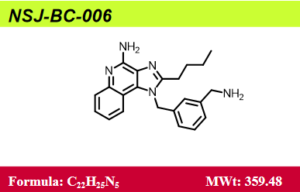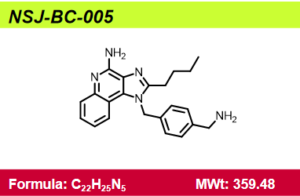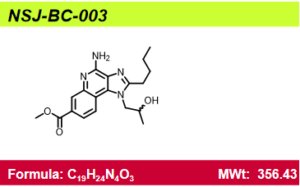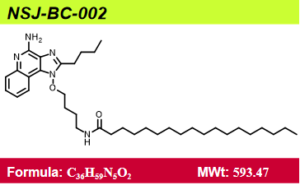Vaccine adjuvants were introduced at the beginning of the 20 th century aiming to improve the efficiency of vaccines. Adjuvants are the compounds added to vaccines that help in enhancing long lasting immune responses to an antigen. They can either act as carriers, depots or stimulators of immune responses. They are helpful in reduction of antigen, required in the vaccine and also simplifies the immunization schedule by reducing or eliminating the need for booster vaccinations. Since the discovery of adjuvants, there has been growing interest for the discovery of new molecules with effective adjuvant properties and improved safety. Depending on the mechanism of action, they are classified into delivery systems (particulate) and immune potentiators.
Toll-like receptor (TLR) agonists are a class of immune potentiators that have shown promising immune-enhancing effects in both human and animal models of cancers. Among them TLR7/8
agonists were found to be one of the successful designs of potent vaccines and cancer immunotherapeutics. [1–3] The studies have shown that these compounds strongly induce Th1 immune response. The imidazoquinoline-based small molecules were found to be potent TLR7- or 8-specific or 7/8 bi-specific agonists. Of which, Imiquimod (R837) and Resquimod (R848) are the most important molecules. Imiquimod is approved and licenced for treatment of genital warts, superficial basal cell carcinoma, and actinic keratosis. Resiquimod is known for antiviral and anticancer therapeutic use.
We provide the most comprehensive choice of TLR7/8 agonists.
For vaccination studies, we supply the TLR7/8 ligands, Resquimod, Imiquimod, CL097, Telratolimod, p-IMDQ, m-IMDQ, UM-3001 etc.
References:
[1] a) Q. Sun, M. Barz, B. G. De Geest, M. Diken, W. E. Hennink, F. Kiessling, T. Lammers, Y. Shi, Chem. Soc. Rev. 2019, 48, 351-381;
b) L. Lybaert, K. Vermaelen, B. G. De Geest, L. Nuhn, J. Controlled Release 2018, 289, 125-145.
[2] L. Milling, Y. Zhang, D. J. Irvine, Adv. Drug Delivery Rev. 2017, 114, 79-101.
[3] J. Hubbell, S. N. Thomas, M. Swartz, Nature 2009, 462, 449-460.
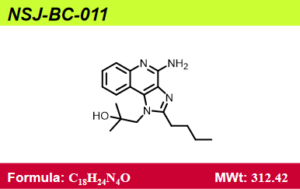
1-(4-Amino-2-butyl-1H-imidazo[4,5-c]quinolin-1-yl)-2-methylpropan-2-ol
CAS No: 2248447-92-7
Read more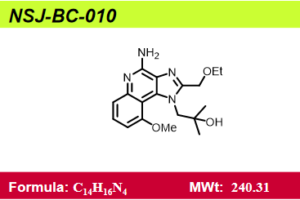
1-(4-amino-2-(ethoxymethyl)-9-methoxy-1H-imidazo[4,5-c]quinolin-1-yl)-2-methylpropan-2-ol
CAS No: 2248447-92-7
Read more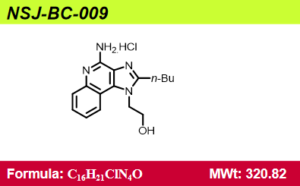
2-(4-Amino-2-butyl-1H-imidazo[4,5-c]quinolin-1-yl)ethan-1-ol hydrochloride
CAS No: 2122261-76-9
Read more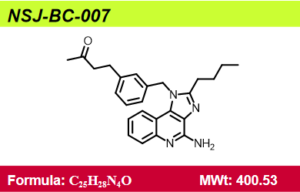
4-(3-((4-Amino-2-butyl-1H-imidazo[4,5-c]quinolin-1-yl)methyl)phenyl)butan-2-one
CAS No: 2137880-92-1
Read more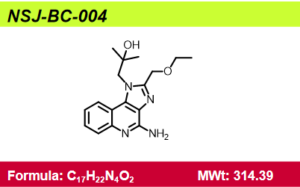
1-(4-Amino-2-(ethoxymethyl)-1H-imidazo[4,5-c]quinolin-1-yl)-2-methylpropan-2-ol
CAS No: 144875-48-9
Read more